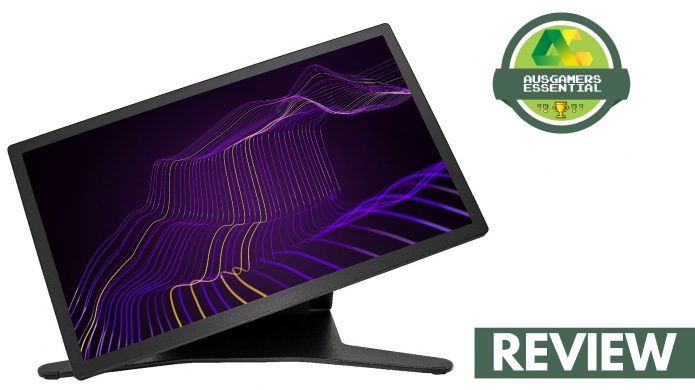ASUS ROG Strix X670E-F Gaming WiFi Motherboard Review
Review By KostaAndreadis @ 04:09pm 15/12/22

Product: ASUS ROG Strix X670E-F Gaming WiFi
Type: Motherboard (PC)
Price: ~ $789 AUD
Availability: Out Now
Link: rog.asus.com/motherboards/rog-strix/rog-strix-x670e-f-gaming-wifi
With the arrival of AMD’s latest generation of Ryzen CPUs, we’ve seen a switch to a brand-new socket type - AM5. With AMD and the Ryzen line-up being AM4 based for so long, it was inevitable that the CPU maker would switch to take advantage of new DDR5 memory speeds and the new PCIe Gen 5 interface. A bunch of acronyms sure, but it means that the new 7000 series of Ryzen CPUs are forward-thinking and take advantage of the latest in storage and memory technology.
And with the recent launch of the Ryzen 7000 series - as seen with our reviews of the AMD Ryzen 7900X and Ryzen 7600X - we’ve had the chance to check out a few AM5 motherboards, with the ASUS ROG Strix X670E-F Gaming WiFi being one. Apart from the long-winded product name (a staple of motherboards), it uses the new AM5 standard with support for both DDR5 6400+ memory speeds and a single PCIe 5.0 x 16 slot.
This makes taking a deeper look into the new AM5 boards pretty important because picking one of the new Ryzen CPUs also means you’ll need to grab a new motherboard. And with that ASUS’s offering here certainly sits on the high-end price point, so let’s dig in.
Board Talk

There aren’t a lot of surprises when taking a look at the ASUS ROG Strix X670E-F Gaming WiFi, memory support is limited to the new DDR5 standard with AMD’s EXPO overclocking. This means speeds of up to 6400+, though any DD5 memory will work fine in the motherboard. Not being backward compatible with the more common and more affordable DDR4 is a blow, but that’s part of the AMD X670 chipset which goes beyond ASUS’s ability to implement such a feature.
The ASUS ROG Strix X670E-F Gaming WiFi is stacked with cutting-edge features, from Wi-Fi 6E to high-speed USB ports aplenty. The new Ryzen CPU range features actual video hardware, though very limited when compared to a discrete GPU like the new AMD Radeon RX 7900 XT, and with that ASUS has included both HDMI and DisplayPort connectors. In terms of ASUS-designed hardware, there's a lot to like, with one great example being the ROG audio chipset. Normally motherboard audio is a massive step back compared to a dedicated soundcard, but that’s not the case here.
CPU Socket: AMD Socket AM5 for AMD Ryzen 7000 Series Desktop Processors
Chipset: AMD X670
Memory: 4 x DIMM, Max. 128GB, DDR5 6400+(OC) and Supports AMD EXTended Profiles for Overclocking (EXPO)
Interface: 1 x PCIe 5.0 x16 slot, 1 x PCIe 4.0 x16 slot (supports x4 mode), 1 x PCIe 3.0 x1 slot
Storage: 4 x M.2 slots (2 x PCIe 5.0 x4 mode, 2 x PCIe 4.0 x4 mode), 4 x SATA 6Gb/s ports
USB Ports: Rear USB: Total 12 ports - 1 x USB 3.2 Gen 2x2 port (1 x USB Type-C), 9 x USB 3.2 Gen 2 ports (7 x Type-A, 2 x USB Type-C), 2 x USB 2.0 ports. Front USB: Total 7 ports - 1 x USB 3.2 Gen 2x2 connector (supports USB Type-C), 1 x USB 3.2 Gen 1 header (supports additional 2 USB 3.2 Gen 1 ports), 2 x USB 2.0 headers (supports additional 4 USB 2.0 ports)
Network: Wi-Fi 6E, 2x2 Wi-Fi 6E (802.11 a/b/g/n/ac/ax), Bluetooth v5.2
Audio: ROG SupremeFX 7.1 Surround Sound High Definition Audio CODEC ALC4080
Back Panel: 1 x USB 3.2 Gen 2x2 port (1 x Type-C), 9 x USB 3.2 Gen 2 ports (7 x Type-A, 2 x USB Type-C), 2 x USB 2.0 ports, 1 x DisplayPort, 1 x HDMI port, 1 x Wi-Fi Module, 1 x Intel 2.5Gb Ethernet port, 5 x Gold-plated audio jacks, 1 x Optical S/PDIF out port, 1 x BIOS FlashBack button, 1 x Clear CMOS button
In terms of its physical design the ASUS ROG Strix X670E-F Gaming WiFi is excellent, from the visual flourishes like the ROG Aura Sync lighting near the VRM heatsink through to the three M2 slot heatsinks that also allow for very simple installation of M2 drives. Even though there’s plenty of room to connect a bunch of SATA drives, this is definitely the sort of high-end motherboard that you can run completely off of high-speed PCIe M2 storage with the knowledge that the drives will be kept cool and in peak performance mode.
Performance Report

Although the inner working of a motherboard in terms of power delivery are a little bit above my own understanding, the ASUS ROG Strix X670E-F Gaming WiFi features several features that no doubt make it highly sought after for the overclockers out there. And really, one of the best features comes with ASUS AI Overclocking - which automates and pushes the system based on cooling and power delivery for the CPU. It can even dynamically engage AMD’s own Precision Boost Overdrive (PBO) for single-threaded tasks to ensure peak performance.
The ASUS ROG Strix X670E-F Gaming WiFi is stacked with cutting-edge features, from Wi-Fi 6E to high-speed USB ports aplenty.
The BIOS interface is clean, detailed, and easy to use, which is further expanded with support for an Advanced and “EZ Mode” to get access to all of the fine-tuning and tweaking you’ll ever need. Even if all you do is adjust the CPU temperature limit, the board takes care of the rest by dynamically adjusting fan speeds for optimal performance. A lot of this can also be tweaked directly within ASUS’s powerful Armoury Crate crate software in Windows too.
Ultimately, the ASUS ROG Strix X670E-F Gaming WiFi isn’t the most high-end AM5 board from ASUS as it doesn’t go all out when it comes to supporting the upcoming USB-4 spec and only two out of the four M2 slots are PCIe Gen5. That said it has all of the excellent build quality and software features we’ve come to expect from the ASUS ROG range, and if you’re in the market for building a new rig and eyeing something like the Ryzen 7900X this is certainly a board to consider.
|
What we liked
DDR5, PCIe Gen5, and plenty of expansion
Great build quality and features
AI-controlled overclocking and tweaking
Great option for the new Ryzen range
|
What we didn't like
Lacking some high-end features of other boards in this range
Pricey
|
We gave it:
8.5
OUT OF 10
|
Latest Comments


















